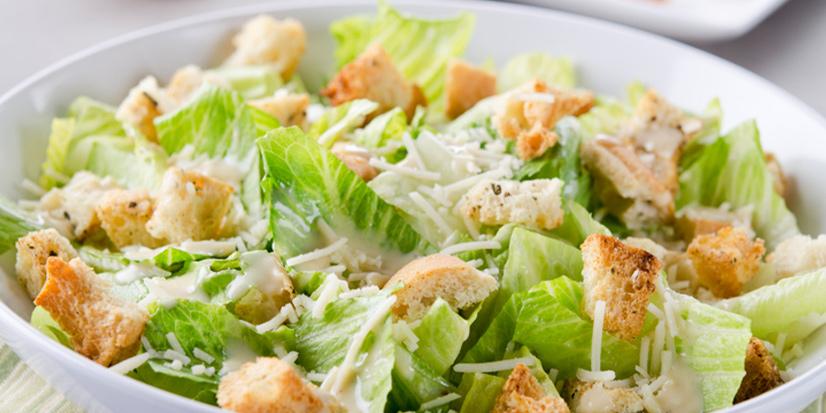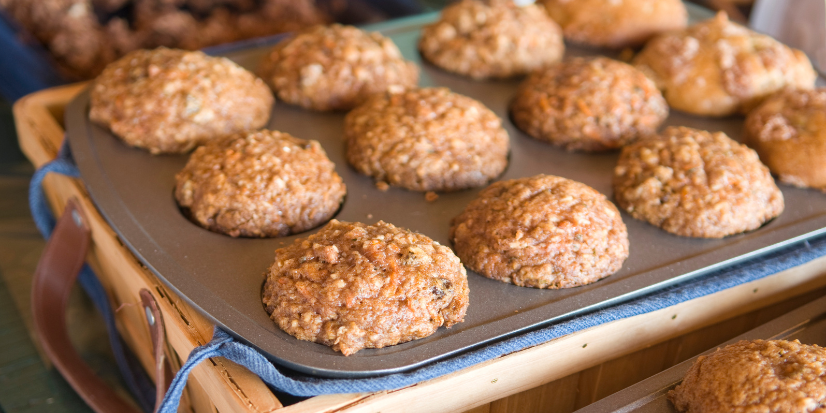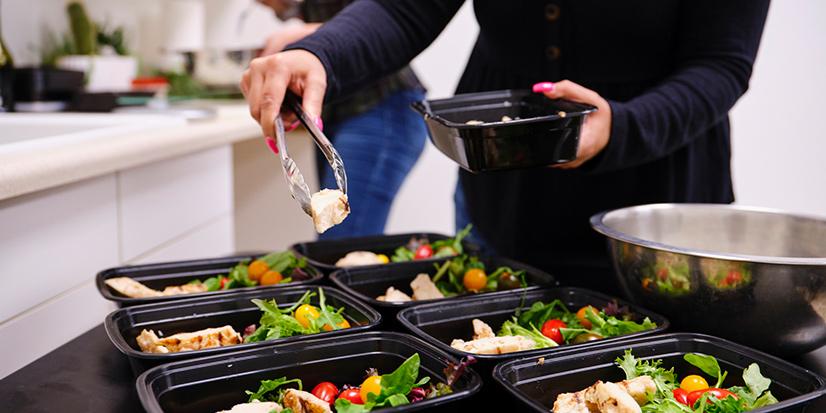
With social media and food blogging being more prevalent than ever, many foods are becoming just as trendy as Taylor Swift! These superstars are deemed “superfoods” for a variety of reasons, perhaps due to their notable antioxidant content or perceived fat-burning abilities. The thing is, not all of these health claims are factual, evidence-based, or made by experts.
I recently asked our athletes and clients at Sports Advantage to list foods they believe to be “overrated”. Overrated foods are those that get way more credit than they deserve; when it comes down to overall nutrition, they aren’t that “super” thus do not deserve celebrity status.
Five Overrated Foods
1. Cereal
Cold cereal is probably the easiest, most convenient breakfast option, making it a “good choice” for busy people. Unfortunately, it’s one of the least nutritious options, even if it “contains whole grains.” Did you know many breakfast bowls of cereal are higher in sugar than pastries, like cookies and cakes? Cereal is extremely processed, providing an inadequate amount of nutrients and little fiber to keep you full. Adding whole grains, artificial vitamins and minerals do NOT make cereal a healthy choice. Sugar is usually one of the first three ingredients listed, which causes a spike in blood sugar and insulin. This often results in craving another high carb/sugar meal or snack a few hours later. Here are more nutritious, balanced breakfast options that take five minutes or less to prepare and keep you full longer:
- Whole wheat toast + natural peanut butter + banana
- Whole wheat English muffin + eggs + avocado
- Greek yogurt + berries + small handful of raw nuts
- Quick oats + raisins + walnuts + cinnamon
- Smoothie: plain Greek yogurt + fruit + spinach
- Overnight oats; they’re ready when you wake up!
2. Salad
Salads are tricky because they could be one of the best OR one of the worst items on a menu. For example, an apple pecan chicken salad may sound healthy, but it can have over 80g of fat and 1,300 calories! A garden salad should contain things that would come from a garden, like cucumbers, tomatoes, and carrots, NOT croutons and cheese. If you’re trying to make the healthy choice by choosing a salad for your meal, make sure to read the ingredients and follow these guidelines:
- Select darker greens when possible (spinach, kale, arugula, or mixed greens)
- Aim for three colors from fruits and/or veggies (greens, cucumber, tomato, carrot, strawberries, etc.)
- Pick a lean protein (grilled chicken, salmon, beans, etc.); say no to “crispy” or breaded items
- Top it off with a healthy fat; 2-3 tablespoons is an appropriate serving (avocado, seeds, raw nuts)
- Look for red flags: croutons, tortilla chips, wontons, large amounts of cheese, candied nuts, dried fruit, multiple protein sources (chicken and hard-boiled eggs and bacon), and creamy dressings.
- Easy on the dressing! Salad dressings alone often pack more fat and calories than the entire salad, so it can truly make or break the nutritional value of this meal. One serving of traditional ranch dressing is two tablespoons and about 150 calories. Most restaurants use four tablespoons, so you’re already at 300 calories… from just the dressing!
Dressing do’s and don’ts:
- Do order it on the side: you’ll likely get the same quantity, however, you’re now in control of how much you use.
- Do avoid creamy dressings: vinaigrettes are often the better choice such a balsamic or oil & vinegar. If creamy dressings are the only way you enjoy salad, look for Greek yogurt-based dressings or consider making your own.
- Don’t be fooled by fat-free dressings: though lower in calories, most fat-free products contain more added sugars than their regular counterpart.
- Do use alternatives. Consider using salsa, guacamole, cottage cheese (as a protein and dressing), or hummus instead of traditional salad dressings.
Example 1: spinach + cucumber slices + red onion + strawberries + grilled chicken + pecans + balsamic vinaigrette
Example 2: mixed greens + cherry tomato + carrot + black beans + guacamole + salsa
3. Smoothies
Like salad, “smoothie” is one of those words that screams healthy. Once again, smoothies can be one of the best or worst options, depending on the contents. A healthy snack should typically be less than 250 calories; however, store-bought and even homemade smoothies might pack more than 800 calories! For many, that’s half a day’s caloric intake in just a few gulps. For people seeking to lose or maintain their weight, keep in mind that approximately 150-250 calories are an appropriate snack serving, while 400-500 calories is a meal. Here are some tips for making a healthy, balanced smoothie:
- Pick your protein: plain Greek yogurt, protein powder, silken tofu, milk
- Choose a liquid: water, dairy-free milk (almond, cashew, soy, etc.) or milk, if it’s not your protein source
- Sweeten with fruit: fresh or frozen berries, banana, pineapple, mango, etc.
- Sneak in a veggie: smoothies are a great way to get more veggies in, especially if you don’t like them (spinach, cucumber, kale, etc.)
- Finish off with healthy fat: add a sprinkle (1-2 Tbsp) of seeds (flax, hemp, etc.) to add some omega 3’s and/or add some natural nut butter to turn a snack into a meal (almond butter, natural peanut butter, etc.)
Snack example (≤ 250kcal): ½ cup non-fat plain Greek yogurt + 1 cup water or unsweetened almond milk + 1 cup frozen berries + 1 cup raw spinach + 1 Tbsp flaxseed
Meal example (400-500kcal): 1 scoop protein powder + 1 cup almond milk + 1 frozen banana + 1 Tbsp flaxseed + 2 Tbsp natural peanut butter
4. Nutrition/Granola Bars
Granola is another misleading term. Did you know that one cup of granola can pack up to 600 calories, with 250 calories coming from fat? Though extremely convenient, most store-bought nutrition/granola bars aren’t that much better. Sugar is often one of the first 3-5 ingredients, and many bars contain several unnecessary ingredients, some of which I cannot even pronounce. When it comes to granola bars, your best bet is to look for the following:
- 10 ingredients or less, with sugar being one of the very last ingredients
- Ingredients you can recognize and pronounce
- 3g of fiber or more
- Naturally sweetened with fruit (dates, apples, etc.)
- Contains healthy fats (nuts and/or seeds)
Popular products that meet these guidelines include Larabars and RX Bars. Another easy, healthy snack option consists of pairing a serving of unsalted nuts (1 oz) with fruit. For example, almonds and an apple.
5. Sports Beverages

My favorite topic. Why? Because most people think sports beverages like Gatorade are healthy because a) athletes drink them all the time and b) famous (fit) athletes like Sydney Crosby promote them on TV. Sports beverages have a time and place; they have a purpose. Just because you’re an athlete or exercise daily, you shouldn’t be drinking them throughout the day, or at all. Sports beverages have two main components: sugar and electrolytes. One does not need sugar and electrolytes when at the movie theatre, the mall or even watching a sports game out in the heat. You might as well be drinking a soda (since they’re both extremely high in added sugar). The only time you might benefit from or need a sports beverage is:
- When exercise is > 90 minutes
- During high-intensity exercise
- While exercising in humid environments
What do these situations have in common? Chances are, you are sweating. If you’re not in these situations, hydrate by drinking water. Aim for at least ½ your body weight in ounces per day. For example, someone that is 150 lbs should consume a minimum of 75 oz of pure water per day.
Dietitian Takeaway
A healthy diet is all about balance. This means you can still have your favorite breakfast cereal or smoothie, just have it less often and in appropriate amounts. For example, if you eat a bowl of cereal every single day, try having one bowl per week instead. If you’re a ranch dressing lover, order it on the side, look for a healthier brand (such as OPA by Litehouse) or try making it yourself. There are thousands of recipes available online to make healthier versions of popular meals, snacks, and sweets so you can enjoy your favorite foods, and reap the nutrition benefits, too!







